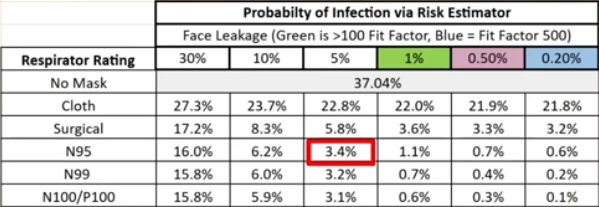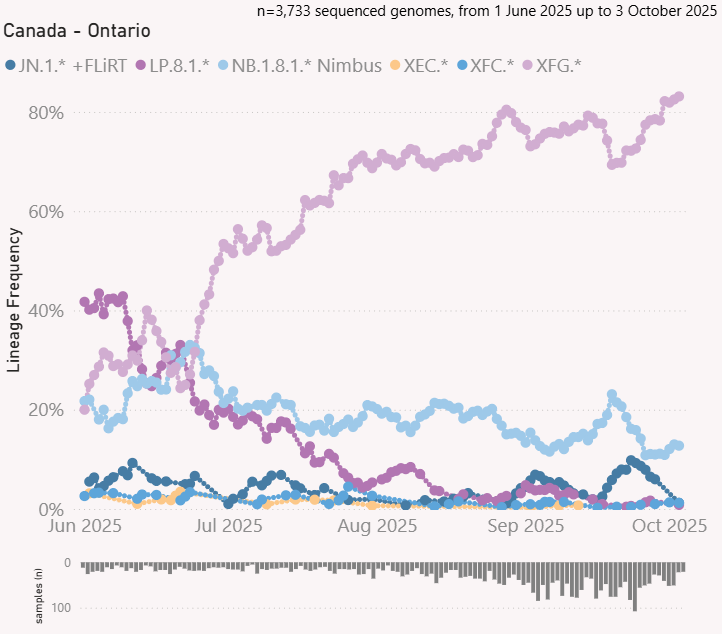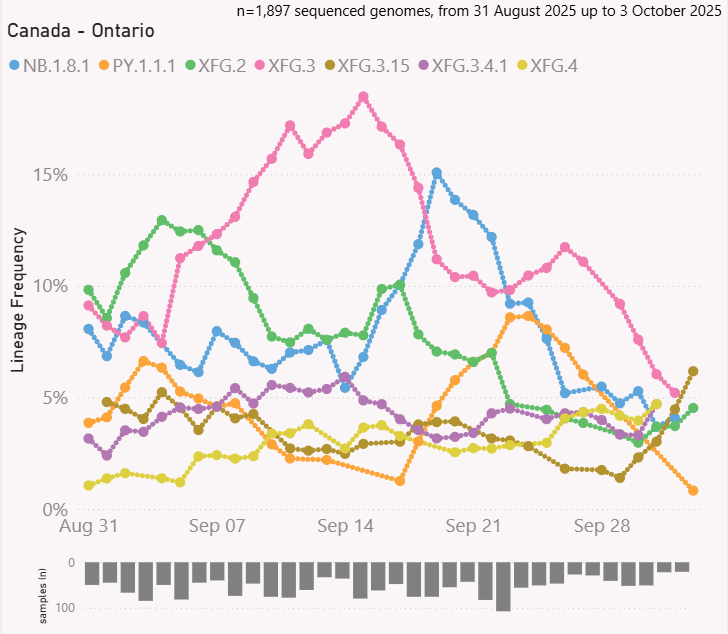How #respirators actually work and which type is best?
I see many claims #masks don't work. This thread will explain *how* they block #viruses much smaller than the size of the holes in the #filter and why you can still smell nasty things while wearing effective masks. 🧵1/
I see many claims #masks don't work. This thread will explain *how* they block #viruses much smaller than the size of the holes in the #filter and why you can still smell nasty things while wearing effective masks. 🧵1/

This thread is long so if you would like an unrolled one page web view that is easier to read or share, look at this tweet to find the link more quickly ( ). 2/
https://x.com/jeffgilchrist/status/1602988780067110912
One of the issues is that there are different types of masks that are designed for different purposes. Cloth masks and the common blue earloop procedure masks were never designed to protect people from airborne pathogens that hang in the air for extended periods of time. 3/
#COVID and other respiratory viruses are transmitted via aerosols breathed, talked, coughed, sung, and sneezed into the air from an infected person. 4/
Someone can enter a poorly ventilated room after the infected person has left and still breathe in enough aerosols to become infected themselves. You can learn more about transmission and multiple methods to protect yourself here ( ). 5/
https://x.com/jeffgilchrist/status/1574709291520593923
Some masks, more commonly known as respirators, are designed to stop aerosols and other particulate matter are used not only in medical settings but also industrial, commercial, and construction sectors to protect against many different airborne hazards. 6/
These are usually certified by some regulatory body with designations like N95 or N99 (NIOSH) in USA ( cdc.gov/niosh/npptl/to… ), FFP2 or FFP3 (EN 149) in Europe ( icc-iso.org/index.php/en/c… ), and CA-N95/N99/N100 (CSA Z94.4.1) in Canada ( csagroup.org/store/product/… ). 7/
The material these certified respirators are made from will be able to filter more than 95% of particles of a certain size, and often more than 98%/99% but that is only for air that passes through the filter. 8/
The most important part is how well the respirator fits on your face. If the fit is poor and there are gaps for air to go around, none of that air will be filtered. 9/
This image has been used as an example of how masks couldn't possibly work since the size of a single COVID-19 virus (virion) is 0.3 micron, smaller than a light dust particle. Many don't understand how viruses travel through the air and how the physics of masks actually work.10/ 

First, viruses don't travel on their own through the air, they catch a ride inside larger aerosols which also contain water, mucins from the lining of the lungs, deep lung fluid and surfactants to make up the complex blob you see in the image ( ). 11/ 
https://x.com/jeffgilchrist/status/1467582905396432904

It is these aerosols that the respirator blocks and filters, and therefore stops the virus particles at the same time. 12/
But even with aerosols, some are still smaller than the holes within the N95 respirator material, so how can they effectively filter out such small aerosols? @minutephysics created an amazing animation showing the astounding physics of N95 masks ( ). 13/
N95 respirators are actually very good at blocking both the largest and smallest particles, while medium size particles are actually the hardest to block. 14/ 

It is not the fibres themselves but because the size of the particles are so small, everything is sticky at a microscopic scale. The van der Waals forces between molecules is more than enough to hold very small things in place. 15/ 

N95 respirators use several tricks to get particles to touch their fibres:
1. Capture by inertial impaction
2. Capture by diffusion
3. Capture by interception
4. Capture by electrostatic attraction
16/
1. Capture by inertial impaction
2. Capture by diffusion
3. Capture by interception
4. Capture by electrostatic attraction
16/

With multiple layers of fibres, particles larger than 1 micron typically travel in a straight line so are almost guaranteed to hit a fibre and stick. 17/
Particles smaller than 0.1 micron are so light that collisions with air molecules bounce them around so they move in a random zigzag pattern (Brownian motion) making it extremely likely the particle will bump into a fibre and get stuck. 18/
Particles in between those sizes (around 0.3 microns) don't travel in straight lines and also don't zigzag randomly but get carried along with the air as it flows around fibres and likely past fibres so can possibly sneak by respirators even with multiple layers. 19/
N95s use a final trick of capturing particles of all sizes using an electric field where even neutral particles will still be attracted (as you can see from neutrally charged styrofoam sticking to a cat with static charged fur). 20/ 

N95s don't rely on static electricty, their fibres work like permanent magnets but for electricity called electrets. You can electrotize a piece of plastic to give it a permanent electric field which allows the fibres in N95s to capture 10x more particles than regular fibres. 21/
Respirators can block almost 100% of the smallest and largest particles and if more than 95% of the tricky medium size particles can be filtered out, the respirator is rated N95, and if it is 99% then is rated N99 and 99.97% is N100 ( ). 22/cdc.gov/niosh/npptl/to…
You may have also seen R95 or P100 ratings where N represents filtering of non-oily particles while R is somewhat resistant to oil and P represents strongly resistant to oily particles. 23/
Remember that even if the material in an N95 can filter >95-99% of particles, they need to go through the mask to work so fit is super important which Henry Reich (@minutephysics) highlights in the caveats part of his video ( ). 24/
If N95s can block all these tiny particles, how come you can still smell some nasty things like farts while wearing a fit tested N95 respirator and does this mean the respirator isn't working? 25/
Thankfully @Wikisteff has done some awesome calculations to explain why you can still smell through respirators ( ). 26/
https://x.com/Wikisteff/status/1599187855003521024
A dalton (Da) or unified atomic mass unit (u) is commonly used in physics and chemistry to express the mass of atomic-scale objects such as atoms, molecules, and elementary particles ( ). 27/en.wikipedia.org/wiki/Dalton_(u…
As @Wikisteff points out, the smell of a fart comes from multiple molecules that range between 34 Da and 131 Da while a single COVID-19 virion is 6 billion Da and an aerosol droplet 160 billion Da, both monstrous sizes in comparison ( ). 28/pnas.org/doi/10.1073/pn…
The atomic mass of these molecules you can smell are more than a billion times less than the aerosols that COVID-19 virions catch a ride in. 29/
That is why molecules like oxygen (16 Da) can get in through respirators to you and exhaled carbon dioxide (44 Da) can get out so you don't suffocate. It is estimated that a COVID-19 infected person carries between 1 billion and 100 billion virions during peak infection. 30/
It is nice to know science and engineering have provided respirators that use the laws of physics to help protect people from all those virions doing damage to your body. 31/ Click "Show replies" 👇 to continue.
Now that you know how respirators work to capture very tiny particles, is it better to get a P100 that can filter more particles than an N95? Aaron Collins (@masknerd) created a video looking at the options ( ). H/T: @jasmith_yorku 32/
While a P100 respirator can filter more and protect against both oil and non-oil based particles compared to an N95, they are designed differently and as a result also typically less breathable (some by 2x) so there are trade-offs. 33/
It is much better to wear a great fitting N95 respirator than a less well fitting P100. 34/
@masknerd shows a table that if you have a proper fit factor of 100 (pass fit test) an N95 ends up with a worn filtration efficiency of 98.3% (since N95's in most cases actually filter closer to 99% when new), and N99 is 98.8% and P100 at 99%. 35/ 

The better the fit, the higher the filtration efficiency and the worse the fit, the less well the respirator works in real life with some air going around the gaps and not being filtered at all. 36/
As an example, @masknerd creates a scenario of a 1 hour meeting where ventilation is 2 air changes per hour in an average size conference room (150 cubed feet) with 8 people and a community COVID rate of 12.5% (so at least one person in the meeting is infected). 37/
If nobody is wearing a respirator except you, what would happen with different masks and respirators at different fit/face leakage values? 38/
These are just high level rough estimates but if people were just talking, those without a mask have a 37% chance of becoming infected ( ). 39/ 

With a cloth mask, even if you seal it well and tape it to your face, because the filtration ability is low, your risk only drops from 37% down to 22%. "While cloth masks are better than nothing, they are closer to nothing than they are to better." 40/
Looking at N95, if you have a poor fit with 30% leakage, the risk of infection drops from 37% down to 16%, much better than nothing. Even without passing a quantitative fit test, leakage of 5% drops that even further to 3.4%. 41/
If you compare the N95 at 3.4% to N99 at 3.2% and P100 at 3.1% you can see there is very little difference between those respirator types so it may not be worth giving up extra breathability and additional cost if all of those types fit the same. 42/ 

If you have the opportunity to do an actual fit test and can find an N95 respirator has a fit factor of 100 (so 1% face leakage) the risk drops from 37% to 1.1%. 43/
A great fitting N95 is 3x better than the slightly better filtration efficiency of an N99/P100 and slightly worse fit (5% face leakage) and many times better than one with even worse fit. 44/
Besides disposable respirators, there are also reusable elastomeric respirators that have replaceable often longer-lasting filters ( ). 45/
https://x.com/jeffgilchrist/status/1564563661414432768
Some elastomeric respirators are much more breathable than any N95 I have tried, become cheaper to use fairly quickly and the soft material (e.g. silicone) allows more people to pass a fit test. 46/ ![Image showing [breathe] (https://prescientx.com/) and FloMask Pro (https://flomask.com/) elastomeric respirators.](/images/1px.png)
![Image showing [breathe] (https://prescientx.com/) and FloMask Pro (https://flomask.com/) elastomeric respirators.](https://pbs.twimg.com/media/Fj79fqsWQAIV9Ta.png)
Are you looking to buy a respirator, elastomeric or even a CO2 monitor? The @DonateMask store uses 100% of money they raise to send free N95-equivalent masks and rapid tests to people in need across Canada ( ). 47/buymask.ca
They also have affordable sample packs so you can more easily try and find masks that fit you and your family ( buymask.ca/collections/ma… ). You can also request masks and rapid tests or donate to their charity here ( donatemask.ca ). 48/
To read more about the science behind masks and their use, check out Bill Comeau's (@Billius27) excellent article ( ). 49/billius27.substack.com/p/masks-eviden…
For an easier to share link outside of Twitter and an unrolled one page web view of this thread, you can go here ( ).pingthread.com/thread/1602994…
I should also add that these physics principles also apply to non-mask filters as well. @JimRosenthal4 the "R" in Corsi-Rosenthal (CR) Boxes points out that the simple straining/sieve method only accounts for about 1% of particles being removed ( ). 50/
https://x.com/JimRosenthal4/status/1603410504168398850
• • •
Missing some Tweet in this thread? You can try to
force a refresh

















